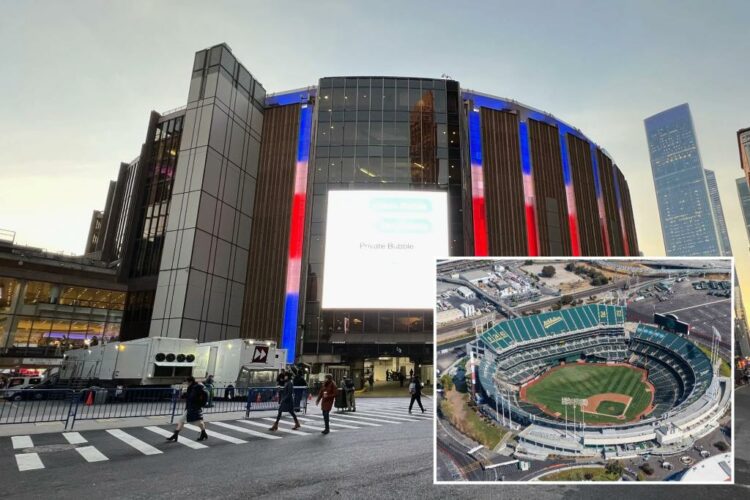“The stadium,” writes Frank Andre Guridy in ‘The Stadium – An American History of Politics, Protest, and Play’ (Basic Books), “has never been a merely a sports facility.”
From the first wooden ballparks, through the huge concrete edifices of the 1950s and 1960s and on to today’s vast, state-of-the-art arenas, Guridy reveals just what the stadia means to American life — extending beyond staging sports events to fulfilling a far wider civic role.
“Americans have gathered at these facilities for more than a century,” he explains. “Like cathedrals, these places are where rituals take place on and off the field.”
The Roebling Suspension Bridge and Three Rivers Stadium on the Ohio River in Cincinnati, Ohio. Universal Images Group via Getty Images
But, says Guridy, who is a professor of history and African American studies at Columbia University, stadiums have also become public squares, used often as much by activists as athletes, by politicians as pop stars.
In the not-so-distant past, for example, stadiums were guilty of entrenching division and discrimination.
Women were banned from locker rooms and press boxes and racial segregation was commonplace in the all-White leagues of the Jim Crow era.
But as Guridy contends, they have also been at the forefront of American activism.
In New York, for example, stadia became “one of America’s battlegrounds for democracy” with European immigrant communities in the 1930s making Yankee Stadium and Madison Square Garden (MSG) focal points for the fight against fascism.
In the 1940s,, Madison Square Garden staged the ‘Negro Freedom Rallies’, making it what Guridy calls “a platform for claims-making.” Getty Images
In the 1940s, meanwhile, MSG staged the ‘Negro Freedom Rallies’, making it what Guridy calls “a platform for claims-making.”
While corporatization and the shift toward private rather than municipal ownership has seen the role of stadia change, athletes such as Colin Kaepernick and Megan Rapinhoe have demonstrated the enduring power of stadiums as protest points.
Or, as the Presidential race hots up, the place where intense political battles are fought.
In New York, for example, stadia became “one of America’s battlegrounds for democracy” with European immigrant communities in the 1930s making Yankee Stadium and Madison Square Garden focal points for the fight against fascism.
USA TODAY Sports via Reuters Con
Moreover, stadia still fulfill their primary purpose – bringing people together.
“Investing in a stadium is best understood as a commitment to a public good, akin to budgeting for public parks and other public institutions that facilitate community cohesion,” writes Guridy.
“Ultimately, the stadium needs to be recognized, and perhaps actively cultivated, as the multifaceted institution that it has always been in American life.” –David C. Kaufman
Source link : http://www.bing.com/news/apiclick.aspx?ref=FexRss&aid=&tid=66d359555e5140d8b70ef60686130ef3&url=https%3A%2F%2Fnypost.com%2F2024%2F08%2F31%2Flifestyle%2Fhow-major-sports-stadiums-changed-america%2F&c=1749145508805249603&mkt=en-us
Author :
Publish date : 2024-08-31 05:00:00
Copyright for syndicated content belongs to the linked Source.
